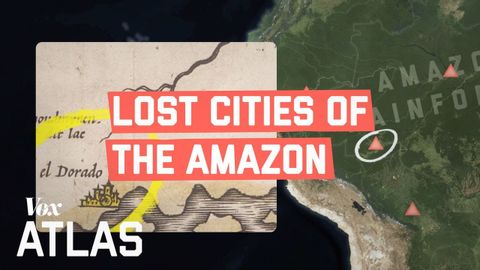【Vox】亞馬遜的 「失落城市」是如何被發現的? (How the “lost cities” of the Amazon were finally found)
 沒有此條件下的單字
沒有此條件下的單字- adj.巨大的;大而重的;大量的;厚重的;大規模的
US /ɪk'strimlɪ/
・
UK /ɪkˈstri:mli/
- adv.極端地 ; 非常地;非常;從極端的角度來看
US /ˈɛvɪdəns/
・
UK /'evɪdəns/
- n. (u.)證據;證據 (法律)
- v.t.表明;證明
- n. (c./u.)大小;規模;魚鱗;比例;等級;標尺
- v.t./i.測量;攀登;魚鱗
